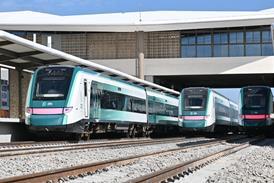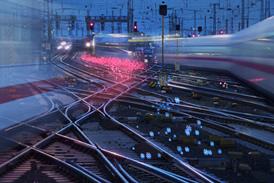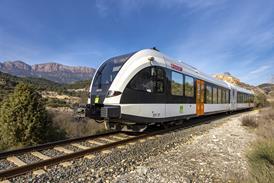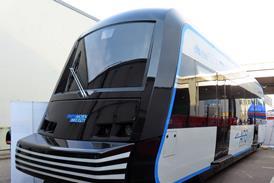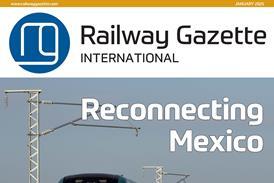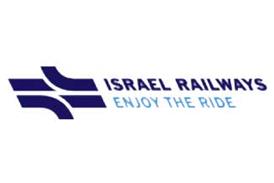INTRO: Apart from Queensland, privatisation of rail freight in Australia could be completed this year. Operational efficiency has improved and trains are now moving more tonne-km than trucks, but publicly-owned interstate routes are still not getting the investment required to boost asset productivity and performance
BYLINE: John Kirk
Executive DirectorAustralasian Railway Association
AUSTRALIA’s railways are vital to the economy. The nation’s 40000 km network is an integral part of the distribution process for interstate freight and a range of regional produce, in addition to the key task of delivering bulk exports such as coal and iron ore. Yet the word ’network’ conceals serious historic problems that are still not being properly addressed by the federal and state governments, despite the fact that the national freight transport task is set to double by 2020.
Australia’s legacy of multiple track gauges is notorious, but the failure to standardise former state railway operating rules and safety regulation still cripples efficient operation. And with some exceptions, very little has been done in the last 25 years to improve the basic infrastructure of key interstate trunk lines. This situation continues even though rail freight is expanding faster than road, and has seized the leading position among the three principal modes in the last couple of years (Table I)
In terms of operations, Australia’s mainly state-owned rail freight industry changed dramatically in the 1990s as a result of privatisation and the increased commercial focus of government operators. The former rail freight deficits have been eliminated through productivity and efficiency improvements, and this has saved federal and state governments more than A$2bn in the past decade.
Unfortunately, far from taking the lead in promoting the economic and social benefits this change has brought about, federal and state governments have been slow to reward the industry. Instead, they continue to insist on more reforms before they will invest in the infrastructure needed to deliver higher productivity.
Operations privatised
Privatisation of rail freight operations outside the long established and largely self-contained mining and ore railways began in 1995, when Specialized Container Transport commenced its own rail service between Melbourne and Perth.
From 300000 tonnes per year carried initially, SCT’s volume has doubled and the company is operating trains up to 1800m long. SCT has expanded its operations to include refrigerated services for high value food products.
In 1996, TNT (now Toll) commenced its own intermodal rail freight service between Melbourne and Perth, primarily competing with National Rail Corporation and SCT. Rail competition across the Nullarbor has been a factor in the rail market share between Adelaide and Perth increasing from around 65% to 77% of the land freight task, while reducing rail freight rates by over 40%. This is saving the Western Australian economy over A$60m a year, and the impact of this is clearly visible in the lower graph of Fig 1.
In 1997 Patrick Stevedores began a wharf-to-wharf rail service between Adelaide and Melbourne, avoiding the need for ships to call at both ports. It has been so successful that its frequency has been doubled to six days per week in each direction. Importers and exporters are reaping the benefits from efficient rail services that save them time and money.
Also in 1997, the former government-owned SA Freight and Tasrail operations in South Australia and Tasmania were sold to US regional railways. Genesee & Wyoming now runs Australia Southern Railroad, and Wisconsin Central is a partner in Australian Transport Network which operates Tasrail. This generated huge benefits, as both SA Freight and Tasrail were making large losses. Detailed financial data about these subsidiary companies is difficult to obtain, but both are trading profitably and winning new business.
ASR growth has primarily been in the haulage of bulk commodities like grain. However, in a powerful demonstration that short-haul rail can work, ASR provides rail haulage of Western Mining containers 15 km across Port Adelaide to the SeaLand export container terminal at Outer Harbour. This service keeps 100 semi-trailers a week out of Port Adelaide’s central business district, reducing road congestion and accidents.
Tasrail has reopened lines and won traffic back to rail in a very competitive and difficult market. Prevailing wisdom was that much of this traffic - cement, coal, logs, containers, newsprint - had been permanently lost to road. It is to be hoped that the proposed merger of Wisconsin Central with Canadian National, which has announced its intention to sell WC’s overseas shareholdings, will not interrupt this progress.
Freight Australia, owned by Rail America, purchased the loss-making Victorian government owned V/Line Freight Corp early in 1999. Since then, gross revenues have increased from A$103m in 1997-98 to A$185m in the financial year ended June 30 2000. A net loss of nearly A$12m per year at takeover has been turned into earnings before interest, tax, depreciation and amortisation of A$45m.
Traffic hauled by FA is up 20% to over 8 million tonnes per year, about 25% of which is intermodal, and A$53m has been spent on capital improvements. However, the company recently announced that it was suspending infrastructure investment because the Victorian government said that from July 1 it will permit open access for other freight operators to track which FA is obliged to maintain and improve.
In addition to the sale of government railways, a number of niche operators such as Austrac, Great Northern Railway, Northern Rivers Railroad, Rail Technical Support Group, Silverton Rail and South Spur have become well established in the marketplace, supplementing larger operators.
Current developments
One of the largest infrastructure projects to be undertaken in Australia will be the long-planned Alice Springs to Darwin railway, which finally achieved financial close on April 20 (RG 5.01 p282). Funding for this A$1·2bn line is coming from the private sector and public sector with governments committing nearly half.
With construction set to start last month, completion of this 1400 km line is expected in 2004. Once the line opens, shippers anticipate reduced freight costs and improved access to markets for food and other high-value time-sensitive products such as perishables and car parts. The provision of cost-effective bulk transport haulage will also stimulate economic activity in the region, particularly in the mining, oil and gas industries.
The proposed 2000 km Melbourne - Brisbane Inland Rail Expressway presents another exciting opportunity for freight operators.
This A$1·4bn project is an incremental upgrade of existing track plus construction of 500 km of new lines including a tunnel through a mountain range near Toowoomba to access Brisbane. It is expected to create economic benefits of A$5bn, attracting nearly 50% of road freight in the corridor to rail with big savings in road damage, road accidents, fuel use and greenhouse gas emissions.
The recent A$585m sale of Western Australia’s Westrail freight business (now trading as Australian Western Railroad) to the Australian Railroad Group has the potential to bring about major change in national rail freight operations. ARG is jointly owned by ASR and Wesfarmers, and is a member of the consortium constructing the Alice Springs - Darwin railway. This will give it considerable market power in the rail network west of Adelaide.
Australia’s major interstate freight operator, National Rail Corp and the New South Wales based FreightCorp are also up for sale this year. If they are sold together, we might witness the creation of a west-coast and an east-coast rail network, similar to the situation in the USA where two major railways compete with each other on each side of the country.
By the end of this year, it is likely that the only government rail freight operations left in Australia will be those operated by Queensland Rail.
Investment imbalance
The federal government says it supports an increased commercial focus on the provision of transport infrastructure.1 Specifically, improvements to rail infrastructure should be paid for by the companies that expect to use it. But if rail is to compete fairly, this must apply to roads as well. Road funding grants continue to be provided from government without any rigorous economic assessment or thorough appraisal of alternative modes. Transport efficiency is undermined because road investment is not required to earn a return on capital, unlike the rail sector.
A$7bn of taxpayers’ money is spent on roads each year, 15 times national spending by governments on rail infrastructure. At the federal level alone, the disparity is worse with A$41bn being spent on roads since 1975 compared with just A$2bn on rail (Table II). This has seen rail’s share of interstate non-bulk freight decline from 60% to 35% despite this freight task tripling over the same period.
Lack of investment in rail infrastructure has reduced consumer choice in many areas to one mode of transport - road. This increases transport costs to the wider community through increased wear and tear on roads and bridges, as well as causing more accidents, and consuming three times more fuel than rail transport.
As has recently been demonstrated across the Nullarbor, rail is a cost-effective partner for highways that lowers overall transport costs. Australia’s domestic freight task is expected to double over the next 20 years. If most of this growth goes by road because rail infrastructure is inadequate, the road network will not cope either, certainly not in terms of motorists’ safety.
In 1991 the Senate Standing Committee on Industry, Science & Technology found that increased use of rail could result in ’significant reductions in carbon-dioxide emissions and large savings in Australian consumption of liquid fuels for transport.’
For example, there are presently 3200 trucks per day operating over the 1000 km between Melbourne and Sydney, Australia’s two largest cities. Just 10 extra trains each day each way would take all those trucks off the highway, saving 330 million litres of fuel and eliminating 1million tonnes of greenhouse gases per year.
The Australian Bureau of Transport Economics (BTE) estimated that upgrading Australia’s intercapital main line rail infrastructure could result in a 40% shift of freight from road to rail and generate net social benefits of A$3400m by 2015 2. Transferring this amount of freight from road to rail in the Melbourne - Sydney - Brisbane corridor would save 200 million litres of fuel and 580000 tonnes of greenhouse gases per year, based on the existing freight task.
A 1999 report for the ARA by the Allen Consulting Group clearly demonstrated that there were enormous economic, social and environmental benefits from rail upgrading. The report supported previous independent analysis that showed rail investments in Australia had high returns. For every A$1 invested in rail there is as much as A$9 return, much higher than road projects.
Although interstate rail is the dominant mode to the west coast, it only carries just over 10% of Melbourne - Sydney road-plus-rail tonnage. A major reason for this difference in market share is the quality of rail infrastructure. Over the last 25 years, A$4bn has been spent on upgrading the Hume Highway between Melbourne and Sydney from a winding two-lane road into a straight four-lane freeway. This is over 100 times the amount spent on a parallel railway that still has excessive curves and grades as well as inadequate crossing loops and signalling.
Hardly surprising, then, that rail’s market share has been eroded from 50% to its present 10%. Rail transit times on this corridor are now 2 to 3 hours slower than road, excluding delivery times to/from rail terminals.
National economy suffers
The unsatisfactory condition of the interstate rail network was recognised in 1997 by the London based Economist Intelligence Unit when its Business Environment Survey ranked 60 countries on 58 indices.
The extent and quality of our rail network was one of four areas which the survey rated at 2 out of 5, the lowest ranking Australia received for any individual indicator. EIU said the lack of transport planning and upgrading of railways and ports had left Australia in a ’particularly poor’ position.
This should have come as no surprise to the federal government. In 1995, its own National Transport Planning Taskforce had identified A$3bn worth of economically justified rail projects. NTPT rated Australia’s interstate rail corridors as generally well below world best practice. The only two that were close to world operating standards were Adelaide to Perth and Adelaide to Alice Springs.
Interstate rail corridors east of Adelaide were identified as having excessive curves and grades and restricted clearances. These significantly impede efficient and competitive operations by restricting speeds and trailing loads, preventing improvements such as double-stacked containers, and increasing fuel and maintenance costs.
NTPT noted that constraints in the Sydney - Brisbane corridor were of such magnitude that the railway may not survive as a commercial freight alternative unless parallel improvements are implemented. This gloomy prognosis gains increasing credibility as the parallel Pacific Highway undergoes a 10-year A$4bn upgrade, and rail’s market share is gradually eroded.
Tracking Australia, the bipartisan federal report into the role of rail in the national transport network, recommended in 1998 spending a similar amount as the NTPT on rail infrastructure.
This report was followed in 1999 by the Productivity Commission’s report Progress in Rail Reform and the Prime Minister’s specially commissioned report Revitalising Rail, both of which recommended substantially increased federal investment in rail. Progress in Rail Reform acknowledged that ’rail reforms [privatising operations] will not address problems of inadequate investment in track and infrastructure.’
Trucks are subsidised
Rail will continue to operate at a competitive disadvantage with road in the highly contestable east coast freight market as long as the heavily subsidised road transport industry continues to receive massive road funding and free productivity improvements from governments, while rail gets minimal investment.
For example the National Road Transport Commission, responsible for setting heavy vehicle road user charges, has acknowledged that B-double trucks are undercharged as an incentive for truck operators to use these vehicles rather than road trains in areas where they can both operate. However, this means that rail’s strongest competitor, the B-double truck, is subsidised on the east coast where road trains are not permitted.
High quality road infrastructure, poor rail infrastructure and under- recovery from trucks for the real costs of road use is undermining the ability of rail operators to gain an adequate return on investment in the east coast market, where infrastructure investment would significantly improve rail’s ability to compete.
Regulatory chaos
Despite having an excellent safety record, Australia’s rail operators are subject to a far more complex and costly regulatory regime than road operators. Although a standard gauge rail link between all the mainland capital cities was finally achieved in 1995, rail regulation continues to be state-based.
Each state has its own rail safety rules, despite a signed inter-governmental agreement that is supposed to overcome these differences. Interstate rail operators face substantial costs in complying with different state requirements, including safety fees that must be paid to each state.
The rail industry has been the major force over the past decade in attempting to standardise the confusing and costly state-based operational procedures. The industry has committed significant human and financial resources to this process, deploying some 200 personnel at a cost approaching A$3m.
In contrast, the NRT is responsible for implementation of uniform road regulations throughout Australia, but has been government funded annually to the tune of approximately A$4m for the past eight years. Like spending on infrastructure, the road transport industry in Australia exists on handouts from government while the rail industry is expected to pay its way.
Investment is not subsidy
Australia’s railways have made substantial improvements in productivity and efficiency over the past 10 years. Industry reform and competition have seen a more profitable, vibrant and dynamic industry emerge that is a vital part of the nation’s economy.
Rail operators, whether government or private, face a difficult competitive environment so long as governments spend billions of dollars on roads that are not required to make a return on capital. Maximising transport efficiency and minimising transport costs requires balanced transport planning and investment. At the moment, this does not exist.
Rail reform is more than just selling railways. Substantially increased investment in rail will provide significant economic, social and environmental benefits to Australia.
For further information about the ARA and its members, please visit our website: www.ara.net.au
TABLE: Table I. Domestic freightbillion net tonne-km
Year ended Rail Road Sea TotalJune 30
1995 99·7 114·4 109·2 323·3
1999 127·4 127·3 109·0 363·7
2000 134·2 - - -
TABLE: Table II. Federal investment in national roads and railways
Five years Roads Railwaysto June 30
1980 A$5·48bn A$0·26bn
1985 A$8·33bn A$0·22bn
1990 A$7·94bn A$0·11bn
1995 A$8·75bn A$0·84bn
2000 A$7·70bn A$0·37bn
Totals A$41bn A$2bn
References
1. Commonwealth Government response to the House of Representatives Standing Committee on Communications, Transport & Microeconomic Reform reports into road and rail infrastructure and other government transport reports, p6.
2. Transport and Greenhouse. Report 94, Bureau of Transport Economics, 1996, p214.
CAPTION: FreightCorp in conjunction with CRT group operates intermodal freight trains between Melbourne and Sydney
CAPTION: Australia Southern Railroad provides locomotives and crews to private operator Toll to haul its trains across the Nullarbor between Adelaide and Perth
CAPTION: Westrail was sold recently to the Australian Railroad Group for A$585m
CAPTION: Fig 1. Australia’s rail freight task expanded substantially in the 1990s; the impact on interstate tonnage due to on-rail competition is visible after 1995 in the lower graph
CAPTION: 1 800 metre double stacked container trains are the mainstay of rail’s 77% share of land freight between the eastern states and Perth in the west
CAPTION: Freight Australia has turned the former loss making V/Line Freight into a highly efficient, profitable business
CAPTION: Fig 2. Rail freight carried in the year ending June 30 2000, by commodity
CAPTION: Great Northern Rail is one of many small private companies supplementing services provided by larger operators
The deficits have gone - now we need the investment
Apart from Queensland, privatisation of rail freight operations in Australia should be completed this year. Operational efficiency improved dramatically during the 1990s. Former deficits have been eliminated, and since 1998-99 trains have moved more tonne-km than trucks. Yet the publicly-owned interstate trunk lines are not getting the investment needed to boost economic performance because the Federal government spends 20 times more on highways than on rail infrastructure.
Adieu les déficits - nous avons désormais besoin d’investir
Queensland mis à part, la privatisation de l’exploitation du fret ferroviaire australien devrait être achevée cette année. L’efficacité de l’exploitation s’est améliorée de manière spectaculaire dans les années 90. Les précédents déficits ont été éliminés et depuis 1998-99, les trains ont acheminés plus de tonnes-km que les camions. Jusqu’à présent les lignes publiques inter-états ne reçoivent pas les investissements dont elles auraient besoin afin de donner un coup de pouce à la performance économique, tout cela parce que le gouvernement fédéral dépense 20 fois plus pour les autoroutes que pour l’infrastructure ferroviaire
Die Defizite sind weg - nun brauchen wir Investitionen
Abgesehen von Queensland sollte die Privatisierung des Bahn-Güterverkehrs in Australien bis Ende dieses Jahres abgeschlossen sein. Die Effizienz der Produktion hat sich in den 1990er-Jahren dramatisch verbessert. Frühere Defizite wurden eliminiert, und seit 1998-99 wurden mehr Güter- Tonnenkilometer per Bahn als per LKW erbracht. Trotzdem erhalten die sich in der

